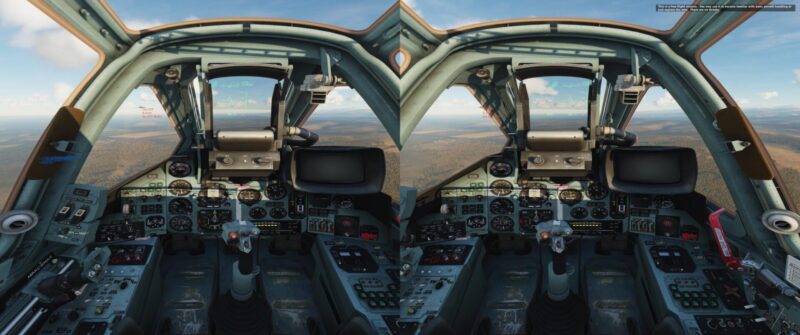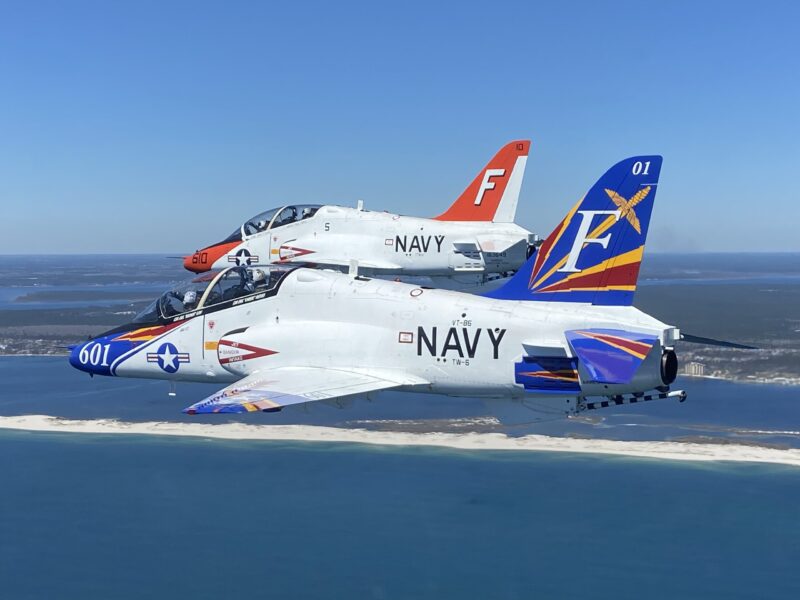The Evolution of Virtual Reality Gaming: A Comprehensive Guide to VR Technology and Flight Simulation.

Virtual reality in gaming (VR) has come a long way, with significant advancements in hardware and software reshaping gaming and simulation experiences. In the flight simulation genre, titles like X-Plane 12, DCS World, Prepar3D, and MSFS 2024 demand VR headsets that deliver high resolution, seamless performance, and a broad field of view ideally.
This blog dives into the current state of VR headsets, their performance in flight simulators, and recommendations for building the ultimate VR flight simulator gaming rig.
Links to Specific Subjects – (On Page ONLY)
- A Brief History of VR Headsets
- Lens Technology in VR Gaming Today
- VR Tracking Evolution: Virtual Reality in Gaming
- Immersion in VR Flight Simulation: A New Horizon
- Current VR Headsets: Features and Performance
- Mixed Reality: Bridging the Gap Between Real and Virtual Worlds
- AUGMENTED REALITY In VR Gaming Enhancing Reality with Virtual Layers
- Haptic Gloves and Other Immersive Options: Expanding Virtual Reality in Gaming
- Upcoming VR Technology and Headsets in 2025: The Future of Virtual Reality in Gaming
- Cordless VR vs. Tethered VR for Flight Simulation
- Software Solutions for Enhanced Performance
- Building the Ultimate VR Flight Simulator Rig
Please Click Links Above to Go to a Subject.
A Brief History of VR Headsets
A Brief History of Virtual Reality in Gaming.
The integration of virtual reality (VR) into gaming has transformed the way players experience interactive entertainment, but its journey began long before it became a household concept. In the 1980s, VR’s gaming potential was first explored by pioneers like VPL Research, which introduced the Data Glove and Eyephone. These early attempts were groundbreaking but limited by high costs and primitive technology.
The 1990s brought notable efforts to mainstream VR gaming, such as Sega’s VR headset and Nintendo’s Virtual Boy, but these devices failed to deliver the immersive gameplay they promised, largely due to technical limitations and lackluster design. The real breakthrough for VR gaming came in the 2010s, when Oculus Rift reignited interest by introducing affordable, high-quality VR headsets tailored for gaming.
Its success was quickly followed by other major players, including HTC Vive, Sony PlayStation VR, and Valve Index, which brought advanced features like room-scale tracking and high-resolution displays. These innovations enabled truly immersive gaming experiences, allowing players to physically interact with virtual worlds. VR gaming expanded further with the rise of standalone headsets like Meta Quest, which removed the need for tethered PCs or consoles.
Today, VR has become a central component of gaming, offering everything from action-packed adventures to puzzle-solving and social multiplayer experiences. With ongoing advancements in haptics, graphics, and AI, virtual reality in gaming continues to push boundaries, offering players a level of immersion that was once purely science fiction.
Lens Technology Over Time: Virtual Reality in Gaming

- Fresnel Lenses: Early headsets, like the HTC Vive, used Fresnel lenses to focus light and improve clarity, though at the cost of glare and edge distortion.
- Aspherical Lenses: Advanced headsets, such as the Pimax Crystal, use aspherical lenses to provide superior clarity and reduce distortion.
- Pancake Lenses: Found in newer headsets like the Meta Quest 3, these lenses allow for lighter and more compact designs while maintaining visual quality.
Lens Technology in VR Gaming Today
Lens technology has played a critical role in the evolution of virtual reality in gaming, enabling increasingly immersive experiences. In the early days of VR, lenses were rudimentary and struggled to provide a convincing sense of depth or clarity. Devices like Nintendo’s Virtual Boy in the 1990s attempted to use simple lenses with red-and-black displays, but the lack of proper stereoscopic 3D and low-resolution visuals limited its appeal and caused discomfort for many users.
As VR technology progressed in the 2010s, advancements in lens design dramatically improved the quality of VR gaming. Fresnel lenses, introduced in headsets like the Oculus Rift and HTC Vive, allowed for wider fields of view while reducing the size and weight of the device. These lenses were paired with higher-resolution displays and precise inter-pupillary distance (IPD) adjustments, creating a more realistic sense of depth and immersion.
Modern VR headsets have taken lens technology even further by addressing issues like the “screen-door effect,” which was prevalent in early consumer models. Companies now use advanced techniques such as aspheric lenses, anti-reflective coatings, and foveated rendering to enhance visual clarity and reduce motion sickness. Some headsets, like the Meta Quest Pro, are experimenting with pancake lenses, which are thinner and offer even better light transmission, making VR gaming more comfortable for extended sessions.
These innovations in lens technology have been instrumental in transforming VR gaming into a mainstream entertainment medium, allowing players to lose themselves in stunningly detailed virtual worlds. As research continues, future lens designs are expected to push the boundaries of realism, bringing hyper-immersive VR gaming closer to everyday reality.
VR Tracking Evolution: Virtual Reality in Gaming
Tracking technology has been a cornerstone of the evolution of virtual reality in gaming, shaping how players interact with virtual environments. In the early days, VR tracking was rudimentary, relying on basic sensors to detect head orientation but offering limited precision and no positional tracking. The first major leap came with systems like the Oculus Rift DK1, which introduced gyroscopic sensors and accelerometers to improve rotational tracking.
However, true immersion required players to move naturally within virtual spaces, which was made possible by the introduction of external tracking systems such as HTC Vive’s Lighthouse technology in 2016. This system used laser-based base stations to enable room-scale VR, allowing players to walk, crouch, and interact with objects in a defined physical area.

Over time, inside-out tracking emerged as a game-changer in VR gaming. Instead of relying on external hardware, headsets like the Meta Quest and PlayStation VR2 began using built-in cameras and sensors to track movement. This innovation not only eliminated the need for external trackers but also made VR more accessible by reducing setup complexity.
Alongside head tracking, controller tracking has also evolved significantly, with modern systems incorporating precise hand and finger tracking for more natural interactions. Cutting-edge technologies such as eye-tracking and body tracking are now being integrated, enabling features like foveated rendering for optimized performance and full-body avatars for enhanced immersion.
The evolution of VR tracking has been pivotal in making virtual reality gaming what it is today—a dynamic and deeply engaging experience where players can seamlessly merge physical movements with the digital world.
- External Tracking (Lighthouses): Early systems, such as those used in the HTC Vive, relied on external base stations for precise positional tracking.
- Inside-Out Tracking: Modern headsets like the Meta Quest 3 and HP Reverb G2 use cameras on the headset for tracking, eliminating the need for external sensors.
- Color Cameras: The latest advancements include color passthrough cameras, enabling mixed-reality experiences by blending real-world and virtual environments.
Immersion in VR Flight Simulation: A New Horizon
Immersion in VR Flight Simulation: A New Horizon
Virtual reality in gaming has redefined immersion, and nowhere is this more evident than in VR flight simulation. These experiences have elevated gaming by allowing players to feel like they are genuinely piloting aircraft, combining technical precision with breathtaking realism. Early flight simulation games relied heavily on monitors and controllers, limiting the sense of presence.

VR technology, however, has revolutionized the genre by introducing headsets that provide 360-degree visuals and spatial audio, creating an unparalleled sense of being inside the cockpit. Games like Microsoft Flight Simulator VR and X-Plane 12 VR leverage these advancements to offer meticulously detailed environments, from accurately rendered aircraft interiors to dynamic weather systems.
Immersion is further amplified through high-fidelity controllers and haptic feedback, enabling gamers to manipulate flight instruments as if they were tangible. VR headsets with advanced tracking systems, such as the HTC Vive and Meta Quest series, allow players to look freely around the cockpit and interact with controls seamlessly. Some setups even include full-motion rigs that replicate the physical sensations of flight, such as turbulence and banking, pushing the boundaries of realism.
Beyond gaming, VR flight simulators are being embraced for training purposes, demonstrating their capability to blend entertainment with real-world skill development. As VR technology continues to advance, with innovations like eye-tracking and ultra-high-resolution displays, flight simulation in VR gaming promises to soar to new heights, offering players an experience that is as exhilarating as it is immersive.
- Latest CPU’s Available Now – Amazon.com
- Get a NEW GPU Best Performance – AMAZON.com
- Upgrade RAM Here today – AMAZON.com
- Prebuilt PC Options – AMAZON.com
Current VR Headsets: Features and Performance
Here is an overview of the most popular VR headsets available today:
1. Meta Quest 3 (Entry-Level)
- Resolution: 2064 x 2208 per eye (LCD lens)
- Field of View: ~110° horizontal, 96° vertical
- Price: $499 – Amazon.com
- Lens Type: Pancake lenses
- Cordless Capability: Yes, with Air Link or Virtual Desktop for PCVR connectivity

Meta Quest 3: A Gateway to Virtual Reality in Gaming
The Meta Quest 3 has established itself as a premier entry-level VR headset, making virtual reality in gaming more accessible than ever. Positioned as the successor to the popular Meta Quest 2, the Quest 3 combines affordability with cutting-edge features, offering an enticing package for both newcomers and seasoned VR enthusiasts. Priced competitively at around $499 (Amazon.com ), it delivers significant upgrades over its predecessor while maintaining its reputation as a standalone, wireless device.
The headset boasts a sleeker and lighter design, making it comfortable for extended gaming sessions, and features pancake lenses that enhance visual clarity with wider fields of view. Equipped with high-resolution displays and an upgraded Snapdragon XR2 Gen 2 processor, the Quest 3 offers smoother performance and sharper graphics, bringing games to life with vibrant detail and minimal latency.
One of its standout features is its improved inside-out tracking, utilizing multiple external cameras to accurately map the user’s environment. This makes room-scale gameplay seamless without the need for external sensors. Additionally, the inclusion of color passthrough augmented reality (AR) capabilities expand its versatility, allowing users to blend virtual objects with real-world surroundings.
The redesigned Touch Plus controllers are ergonomically optimized and support hand tracking, offering a more intuitive gaming experience. With a growing library of exclusive and cross-platform titles, the Quest 3 has bolstered its popularity, attracting gamers with its ease of use and affordability. As Meta continues to refine its ecosystem, the Quest 3 remains a cornerstone for bringing high-quality VR gaming to a broader audience, solidifying its role as an essential device in the world of immersive entertainment.
2. HP Reverb G2 (Mid-Tier) – Amazon.com
- Resolution: 2160 x 2160 per eye (LCD lens)
- Field of View: ~114° horizontal, 98° vertical
- Price: $599 – Amazon.com
- Lens Type: Fresnel lenses
- Cordless Capability: No (PC-tethered)
HP Reverb G2: A Mid-Tier Marvel in Virtual Reality in Gaming
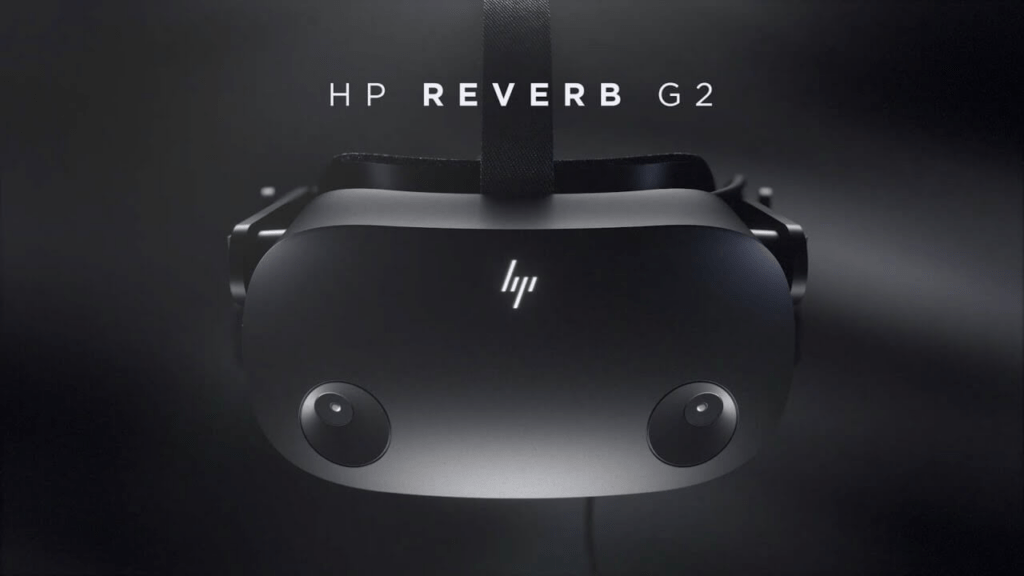
The HP Reverb G2 has emerged as a standout choice for mid-tier virtual reality in gaming, offering a balance of premium features and affordability. Priced at approximately $599, the Reverb G2 caters to gamers seeking high-quality VR experiences without venturing into the high-end market.
Designed in collaboration with Microsoft and Valve, the headset boasts industry-leading visual fidelity with dual 2160×2160 LCD panels per eye, delivering an unmatched level of sharpness and clarity for its class. This high resolution minimizes the “screen-door effect,” providing crisp details in gaming environments that immerse players in vivid, lifelike worlds.
The Reverb G2’s comfort-focused design includes adjustable head straps and improved face padding, making it suitable for extended sessions. Its integrated audio system, adapted from Valve’s Index, delivers spatial sound that enhances immersion, whether soaring through skies or exploring fantastical realms. The headset utilizes inside-out tracking with four cameras, eliminating the need for external sensors while maintaining precise positional accuracy.
While its controller tracking lags slightly behind competitors like the Meta Quest 3, the Reverb G2 compensates with its impressive visuals and compatibility with both SteamVR and Windows Mixed Reality platforms, granting access to a vast library of VR gaming titles.
As a tethered headset, the Reverb G2 connects to PCs, leveraging their processing power to support graphically demanding games like Half-Life: Alyx and Microsoft Flight Simulator VR. This makes it an excellent choice for enthusiasts with gaming PCs who want a mid-tier device that punches above its weight in visual quality. Its popularity continues to grow among gamers who prioritize visuals and sound, cementing the HP Reverb G2 as a top contender in the mid-tier VR gaming market.
3. Pimax Crystal (High-End)
- Resolution: 2880 x 2880 per eye (Mini-LED lens)
- Field of View: ~140° horizontal, 125° vertical
- Price: $1,599 – Amazon.com
- Lens Type: Aspherical lenses
- Cordless Capability: Yes, with Wi-Fi 6E connectivity
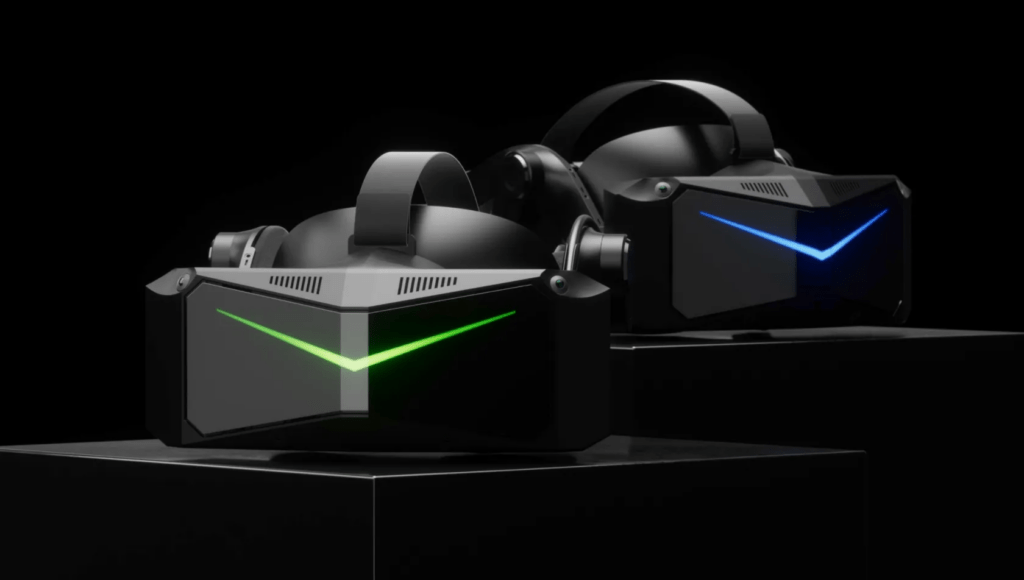
Pimax Crystal: A High-End Powerhouse in Virtual Reality in Gaming
The Pimax Crystal sets a new benchmark for high-end virtual reality in gaming, delivering an unparalleled combination of performance, customization, and cutting-edge technology. Priced at approximately $1,599, this premium headset is tailored for VR enthusiasts and professionals seeking the ultimate immersive experience.
One of its defining features is its swappable lens system, offering users the choice between wide field-of-view (FoV) lenses at 140° or high-resolution lenses with 35 PPD (pixels per degree), making it the most visually versatile headset on the market. Paired with dual mini-LED panels supporting a combined resolution of 5760×2880, the Crystal ensures stunning clarity, vibrant colors, and an immersive experience free from the “screen-door effect.”
The headset includes a state-of-the-art Snapdragon XR2 processor for standalone usage, though its true power shines in tethered mode, where a PC delivers breathtaking visuals in graphically intensive games. Its modular design allows for extensive upgrades, including interchangeable face cushions and tracking options, while its inside-out tracking system offers precise positional accuracy with external tracking compatibility for professional setups. The Pimax Crystal also supports a wide range of controllers and accessories, providing flexibility for gamers who demand tailored configurations.
Comfort is a key focus, with an ergonomic design, improved weight distribution, and ventilation to support extended play sessions. The Crystal’s expansive ecosystem integrates with both SteamVR and proprietary Pimax software, offering access to a rich library of VR gaming content. Despite its high price point, the Pimax Crystal has garnered acclaim for its commitment to delivering unmatched visual fidelity and flexibility, making it a must-have for gamers who demand the best in high-end virtual reality gaming.
With its groundbreaking features, the Pimax Crystal has redefined what is possible in VR, setting the gold standard for immersive gaming experiences.
4. Varjo Aero (Professional)
- Resolution: 2880 x 2720 per eye (Mini-LED lens)
- Field of View: ~115° horizontal, 92° vertical
- Price: $1,990 – Amazon.com
- Lens Type: Aspherical lenses
- Cordless Capability: No (PC-tethered)
Varjo Aero: The Professional Standard in Virtual Reality in Gaming
The Varjo Aero has redefined professional-grade virtual reality in gaming, offering an elite experience for gamers and professionals who demand the highest levels of precision and realism. Priced at approximately $1,990, the Aero caters to users seeking cutting-edge technology for both immersive gaming and advanced simulation applications. Its standout feature is its stunning visual fidelity, achieved through dual mini-LED displays with a combined resolution of 5760×2720 and industry-leading 35 pixels per degree (PPD).
This ensures crystal-clear imagery, eliminating the “screen-door effect” and rendering even the smallest details with lifelike clarity.
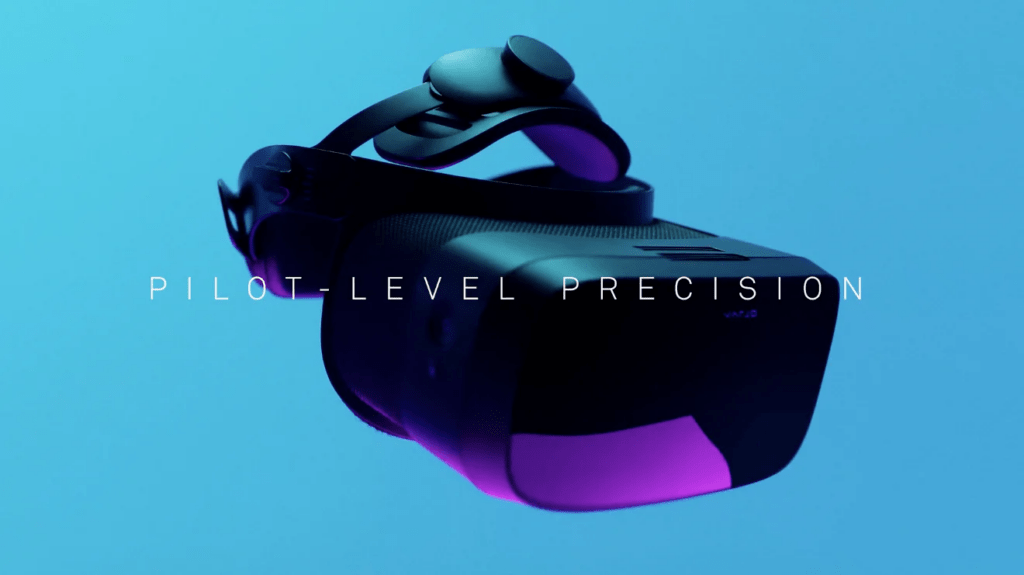
Designed for comfort during long sessions, the Aero features a lightweight build, customizable head straps, and active cooling, making it ideal for demanding gaming marathons or professional use. The device employs aspheric lenses with a wide 115° field of view, offering sharp visuals across the entire frame with minimal distortion.
Its precise eye-tracking technology not only enables foveated rendering for optimized performance but also enhances interactivity within games by detecting where the user is looking, creating a more natural experience.
The Aero relies on external tracking through SteamVR base stations, which ensures top-tier positional accuracy and compatibility with high-performance controllers like Valve Index. Though it is a tethered headset, the reliance on a powerful PC allows it to excel in graphically intensive games like Half-Life: Alyx and simulation titles like Microsoft Flight Simulator.
The Varjo Aero is particularly favored by professionals in industries such as aviation and architecture, but its high resolution and immersive capabilities have made it a coveted choice for serious gamers as well. While its price and PC requirements place it out of reach for casual users, the Varjo Aero’s unmatched performance, comfort, and precision make it the gold standard for those looking to experience the pinnacle of virtual reality in gaming and beyond. It represents the future of immersive technology, setting new benchmarks for what VR headsets can achieve.
Mixed Reality: Bridging the Gap Between Real and Virtual Worlds

Mixed reality (MR) is revolutionizing the realm of virtual reality in gaming by seamlessly blending the physical and digital worlds, creating immersive experiences that are both interactive and grounded in reality. Unlike traditional VR, which fully immerses users in a virtual environment, MR allows real-world elements to coexist with virtual objects, enabling players to interact with both simultaneously.
This fusion is powered by advanced technologies such as spatial mapping, inside-out tracking, and augmented reality (AR) overlays, all of which enhance immersion by aligning virtual elements with the user’s physical surroundings.
Modern mixed reality headsets, such as the Meta Quest 3 and Microsoft HoloLens 2, are leading the charge by incorporating color passthrough cameras and advanced sensors to bring the concept of MR gaming to life. In an MR game, players might engage in a battle where enemies emerge from their living room walls or solve puzzles by manipulating digital objects on a real-world table. These experiences are bolstered by hand tracking, voice commands, and even environmental awareness, which adapt gameplay to the user’s unique space.
Mixed reality has also gained popularity for its social gaming potential, allowing players to interact with friends in hybrid spaces that combine physical and virtual elements. Moreover, its applications go beyond entertainment, contributing to training, education, and creative fields, where the blend of real and virtual tools fosters innovation. As hardware and software continue to advance, mixed reality is poised to become a vital part of the gaming landscape, bridging the gap between the tangible and the digital to deliver unprecedented levels of immersion and interactivity.
AUGMENTED REALITY In VR Gaming Enhancing Reality with Virtual Layers

Augmented reality (AR) has transformed the gaming landscape by overlaying virtual elements onto the real world, creating engaging and interactive experiences that bridge physical and digital play. Unlike virtual reality, which immerses players in a fully digital environment, AR integrates game mechanics with the player’s surroundings, using smartphones, tablets, or AR glasses as the medium.
The rise of AR in gaming was spearheaded by titles like Pokémon GO, which captivated millions by allowing players to catch virtual creatures in real-world locations, blending gameplay with exploration. AR games leverage GPS, motion tracking, and advanced camera systems to align digital content with real-world spaces, creating experiences that feel authentic and immersive.
Modern AR gaming has expanded significantly with advancements in hardware, such as AR-enabled devices like Microsoft HoloLens and Magic Leap. These tools offer deeper immersion, enabling players to interact with 3D holograms and virtual objects as if they were physically present. The integration of multiplayer functionality has further enhanced AR gaming by allowing players to collaborate or compete in shared spaces, turning local parks, city streets, and even homes into dynamic game arenas.
The potential of AR gaming continues to grow as developers experiment with blending real-world physics, environmental mapping, and AI-driven interactions. As AR technology becomes more accessible, its applications in gaming are expected to evolve beyond entertainment, merging storytelling, physical activity, and social engagement to deliver truly transformative experiences. Augmented reality has established itself as a key pillar of the gaming industry, redefining how players interact with games by enhancing reality itself.
Haptic Gloves and Other Immersive Options: Expanding Virtual Reality in Gaming
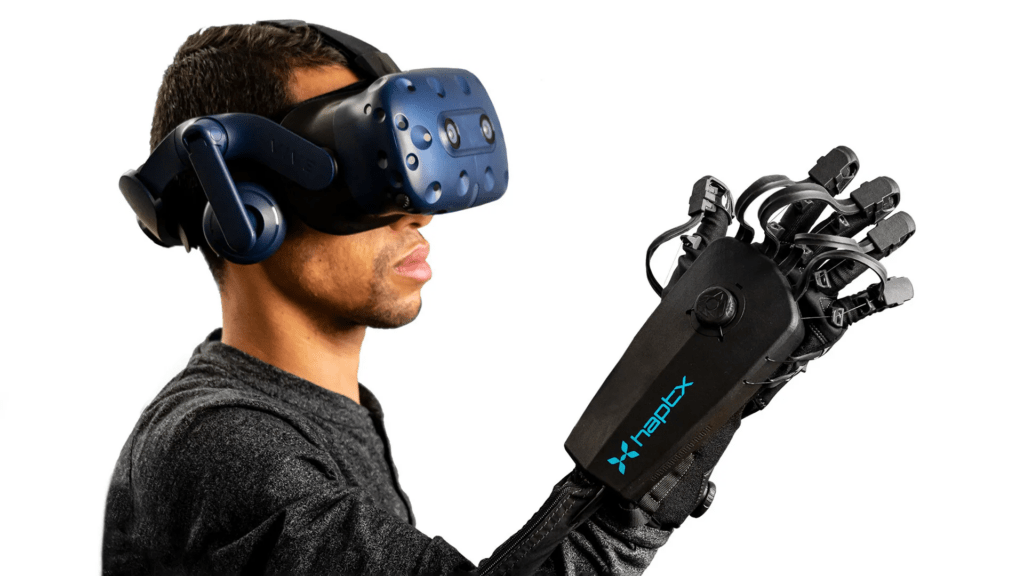
Haptic gloves and other immersive peripherals are revolutionizing virtual reality in gaming by enhancing tactile feedback and deepening player immersion. While traditional VR systems rely on visual and auditory cues, haptic technology adds the sense of touch, allowing players to physically interact with virtual environments.
Haptic gloves, such as those developed by companies like HaptX and Manus, use advanced actuators to simulate sensations like pressure, texture, and resistance, enabling gamers to feel the weight of objects, the tension of pulling a bowstring, or the impact of a virtual collision.
These devices bring a new level of realism to gameplay, transforming how players engage with VR worlds.
Beyond gloves, other immersive options such as full-body haptic suits, like the Teslasuit, provide feedback across the entire body, delivering vibrations and temperature changes that align with in-game events. Treadmills like the Omni One allow players to physically walk or run in place, enabling more natural movement within virtual spaces. Additionally, motion capture systems and advanced tracking technologies further enhance realism by translating intricate body movements into the virtual world with precision.
These peripherals expand the scope of VR gaming by making it more interactive and physically engaging, blurring the boundaries between reality and the digital universe. As these technologies continue to evolve, haptic gloves and other immersive options are set to redefine virtual reality in gaming, offering players an unparalleled level of interaction and immersion.
Upcoming VR Technology and Headsets in 2025: The Future of Virtual Reality in Gaming
As we enter 2025, the landscape of virtual reality in gaming is poised for a wave of innovation with the introduction of advanced VR technology and next-generation headsets. Upcoming devices promise to push boundaries, offering unparalleled immersion, performance, and accessibility. Leading the charge is the highly anticipated Apple Vision Pro, set to redefine the VR space with its seamless integration of augmented and virtual reality (AR/VR), ultra-high-resolution displays, and advanced eye-tracking capabilities.
Expected to debut as a premium device, it aims to blend gaming, productivity, and media consumption into one sophisticated ecosystem.
Other major players, such as Meta and Sony, are rumored to be refining their flagship headsets. Meta’s potential successor to the Quest 3 is expected to enhance standalone performance with improved processing power and a slimmer design, while Sony may further develop the PlayStation VR2 with wireless functionality and expanded tracking capabilities to cater to console gamers.
Meanwhile, innovative startups like Pimax and Varjo continue to raise the bar for high-end headsets, with devices boasting wider fields of view, modular designs, and photorealistic visuals that appeal to gaming enthusiasts and professionals alike.
Key technological advancements in 2025 are expected to include lighter, more ergonomic headsets, improved pancake lens designs for clearer visuals, and advancements in wireless streaming to eliminate tethering without compromising performance. Haptic integration, AI-driven personalization, and adaptive foveated rendering will further enhance immersion and interactivity.
With a focus on accessibility and diverse price points, these advancements are set to make VR gaming more appealing to mainstream audiences. As 2025 unfolds, the upcoming VR technology and headsets promise to usher in a new era of virtual reality in gaming, blending cutting-edge innovation with broader adoption across the industry.
On the Horizon:
- Apple Vision Pro: Promises mixed-reality capabilities, with advanced eye-tracking and spatial awareness for a seamless experience. Resolution and FOV details are unconfirmed but expected to be competitive.
- Meta Quest Pro 2: Rumored to feature improved optics and increased processing power for better standalone and PCVR gaming.
- Pimax 12K QLED: Expected to redefine field of view and resolution boundaries, potentially offering a 200° horizontal FOV.
Cordless VR vs. Tethered VR for Flight Simulation

Cordless VR headsets, like the Meta Quest 3 and Pimax Crystal, have improved significantly with Wi-Fi 6E and direct streaming. While these provide excellent PCVR performance, tethered headsets like the HP Reverb G2 or Varjo Aero still excel in delivering low-latency, high-bandwidth connections critical for demanding simulators like X-Plane 12 and DCS World.
Cordless VR vs. Tethered VR for Flight Simulation: Virtual Reality in Gaming
The debate between cordless VR and tethered VR remains central to the evolution of virtual reality in gaming, especially in the context of flight simulation. Tethered VR headsets, such as the HP Reverb G2 and Varjo Aero, excel in delivering unparalleled graphical fidelity and processing power by leveraging high-performance PCs.
These devices are ideal for flight simulation enthusiasts who demand hyper-realistic visuals and precise tracking to replicate the intricate details of cockpit controls, environmental textures, and dynamic lighting conditions. The downside, however, lies in the physical tether, which can limit freedom of movement and slightly reduce immersion.
Cordless VR headsets, like the Meta Quest 3, are redefining accessibility in flight simulation. Their wireless design eliminates the hassle of cables, allowing players to enjoy the freedom of movement and a more streamlined setup. While cordless options are typically less powerful due to reliance on internal processors or compressed streaming over Wi-Fi, advancements in standalone hardware and wireless PC streaming have significantly narrowed the gap in performance.
For casual users or those without high-end gaming PCs, cordless VR provides a more convenient and affordable entry into the immersive world of flight simulation.
Ultimately, the choice between cordless and tethered VR for flight simulation depends on individual priorities—whether it’s achieving cutting-edge realism with a tethered setup or embracing convenience and mobility with a cordless device. As technology evolves, the distinction between these two approaches will likely blur, further enhancing the role of virtual reality in gaming and simulation.
Software Solutions for Enhanced Performance
1. Virtual Desktop:

Enables wireless PCVR gaming with minimal latency. Works by streaming your desktop to your VR headset over a high-speed Wi-Fi connection.
2. Lossless Scaling App:
This tool uses upscaling techniques to improve VR frame rates without sacrificing visual quality. It’s especially useful for users running resource-intensive simulators.
3. OpenXR Toolkit:
Allows VR users to optimize settings like FOV, resolution scaling, and performance tweaks tailored to specific flight simulators.
4. FPS-VR:
Monitors real-time performance metrics in VR, helping users fine-tune their settings for the best experience.
Building the Ultimate VR Flight Simulator Rig
Graphics Cards:
- NVIDIA RTX 4090: Currently the best choice for VR, capable of handling 4K VR rendering with ease.
- NVIDIA RTX 5000: Expected to feature even more advanced ray tracing and VR-specific optimizations.
- AMD Radeon 7900 XTX: A viable alternative with robust performance, especially for multi-threaded workloads in simulators.
Processors:
- AMD Ryzen 9 7950X: Offers excellent single-thread and multi-thread performance.
- Intel Core i9-14900K: A solid choice for CPU-intensive simulators like MSFS 2024.
- AMD Ryzen 8000 Series: Rumored to bring significant IPC improvements.
Other Hardware:
- RAM: At least 32GB DDR5 for smooth multitasking and complex scenery rendering.
- Storage: NVMe SSDs for fast loading times, such as Samsung 990 Pro.
- Joystick / HOTAS – AMAZON.com
- Rudder Pedals – AMAZON.com
- Throttle Quadrant – AMAZON.com
- Gaming Chair – AMAZON.com
- VR Headset – AMAZON.com
Conclusion
Virtual reality technology is transforming the flight simulation genre, with innovations in hardware and software enabling unmatched realism. For beginners, the Meta Quest 3 offers an accessible entry point. Mid-tier options like the HP Reverb G2 provide a sweet spot of quality and affordability. For those seeking the ultimate experience, high-end headsets like the Pimax Crystal and Varjo Aero lead the pack.
Pairing these headsets with powerful PCs featuring RTX 4000/5000 GPUs and AMD or Intel’s latest CPUs ensures a truly immersive experience. As 2025 approaches, advancements in VR technology promise even more exciting possibilities for flight simulation enthusiasts.

Author
Brendon McAliece (Aka Gunnie) is a military veteran with 23 years working on Jet Fighters, their weapons systems and ejection seat/module systems as well as munitions and R&D. Involved with flight simulation since the 1980s, he has flown all the major flight simulators over the years.
He is an Australian expat who has lived in Malaysia, UK, Saudi Arabia and more recently Thailand. He is a multi-lingual blogger who loves to share his life experiences here on LetsFlyVFR.com and DreamingGuitar.com, with his lifestyle and Travel experiences Blog plus his Dreaming Coffee website.
Learn More @ DreamingGuitar.com – DreamingCoffee.com – LetsFlyVFR.com
( HOME – BLOG – SHOP – ABOUT )
As an Amazon affiliate I may benefit from qualifying sales.
